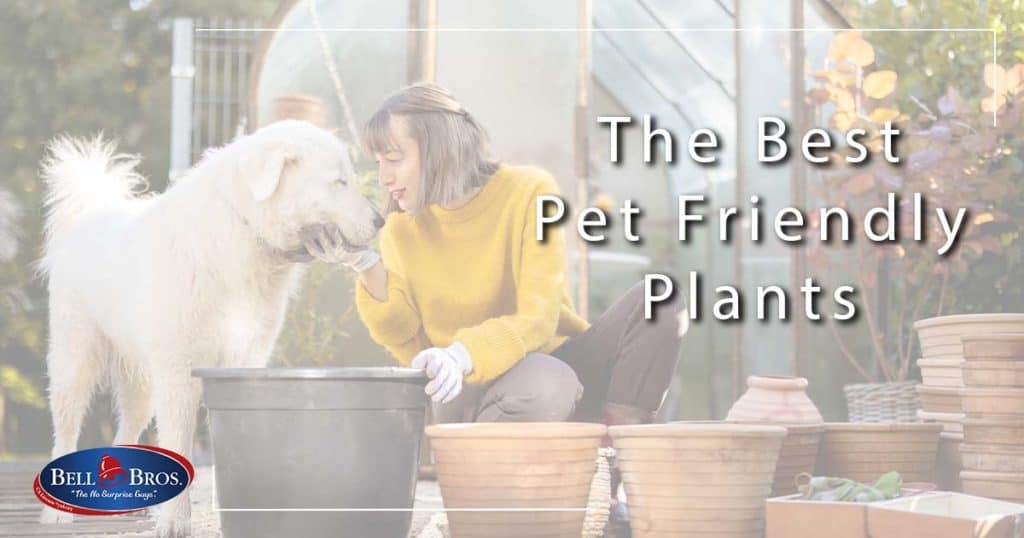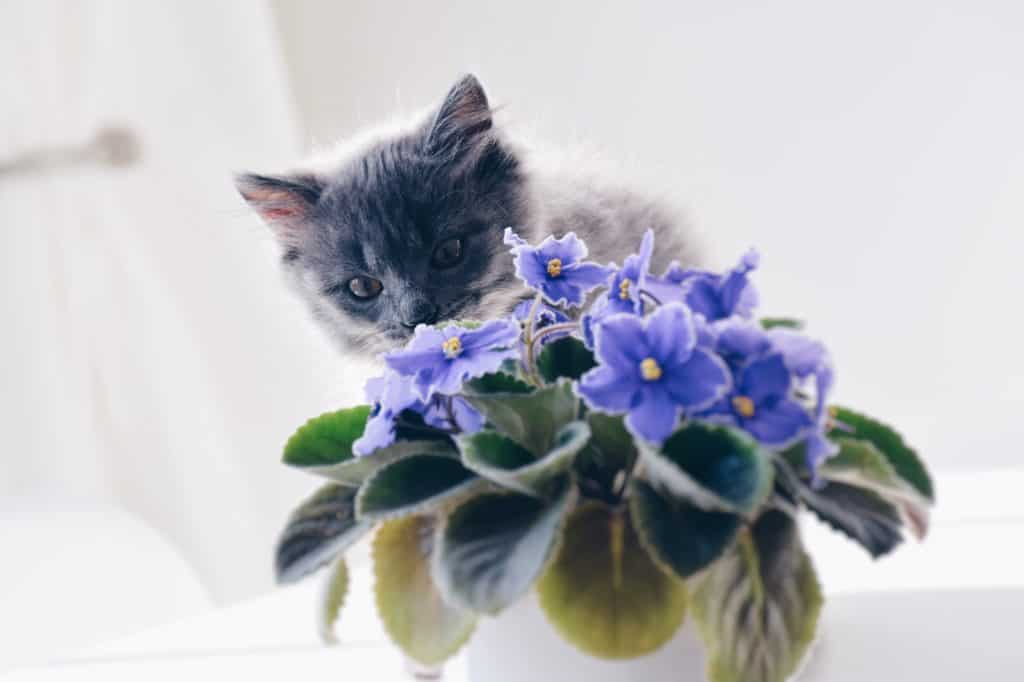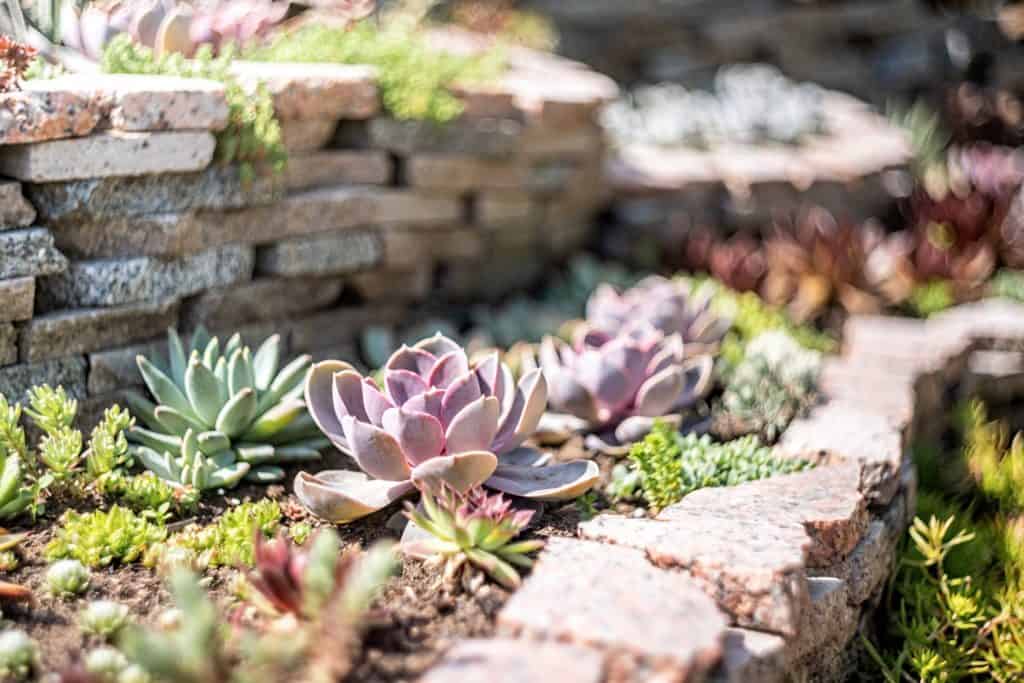 You’ve added a pet or two to your home, but what about plants? Pets and plants go together perfectly when you choose any of these 15 best pet friendly plants!
You’ve added a pet or two to your home, but what about plants? Pets and plants go together perfectly when you choose any of these 15 best pet friendly plants!
1. African Violet
The African violet lights up any space with its deep purple pedals. They can be a smidge temperamental about watering, preferring a happy medium between dried out and wet soil. But this flowering plant does love filtered light — so much it will reach for more light if you don’t periodically rotate the pot.

2. Baby’s Tears
Baby’s tears are a creeping plant which means they grow slowly but surely, covering the ground along the way. It does well in a hanging basket or conventional container as long as it has filtered light and moist soil. Baby’s tears prefer an air temperature between 70 degrees and 80 degrees Fahrenheit.
3. Banana
If you want to add a bit of colorful height to your living space, check out a banana plant. Commonly called a tree, it’s really an herb that needs a warm and humid location with as much sunlight as possible. A banana plant needs plenty of room to grow so you’ll want to plant it in a large, deep container, but it can do well if transplanted outdoors.
4. Spider Plant
While it may look like an ornamental grass at first glance, the spider plant produces flowers as it matures. For best growth, keep the spider plant in indirect light and in well-draining soil; it should be fertilized twice a month during the spring and summer. It might sound like a lot of work, but quality care encourages flowering and baby spider plants!
5. Venus Fly Trap
While your pets might not be able to feed themselves, a Venus fly trap does! This intriguing plant entices passing flies and tiny insects to land inside its open leaves with a fruity smell. The Venus fly trap loves direct sunlight — at least four hours per day. Water with distilled water, don’t let the soil dry out completely, and you’ll have years of enjoyment!

6. Areca Palm
Also called a butterfly palm, the areca palm needs bright, indirect light and temperatures between 60 degrees and 75 degrees Fahrenheit. Keep this beauty away from sudden temperature drops and cold drafts, and let the topsoil dry out between waterings.
7. Boston Fern
Some pet parents choose to hang the voluptuous Boston Fern from the ceiling or an accessible corner so their pet doesn’t bat around its fronds. It’ll flourish with medium to high levels of indirect light and moist soil.
 8. Calathea
8. Calathea
This eye-catcher almost prefers to live in the shadows which is a shame given the prominent patterns on the leaves and purple underneath. The calathea can be a bit fussy to care for, but if you can replicate its tropical background indoors, it can reach maturity in a year. It prefers indirect or filtered light, high humidity, and moist but not soggy soil.
9. Peperomia
While the peperomia comes in several varieties, one of the most popular is the watermelon. And it’s no surprise when you see the leaves — they’re a ringer for a watermelon rind! Peperomia stays relatively small as it grows, and has easy to handle needs. Give it full or partial indirect light, moist but well-draining soil, humidity, and a temperature between 60 degrees and 80 degrees Fahrenheit, and you’ll enjoy it for years to come!
10. Orchid
The orchid naturally stands out from the crowd with its slender stem and elegant petals. If you can replicate its natural environment — bright, indirect light; orchid-specific soil; only watering when the soil is dry to the touch; and 40% to 70% humidity — then you’ll be rewarded with stunning blooms for several years.
11. Mosaic Plant
If you have a small home office or a small living space, the mosaic, or nerve, plant is a good choice. Known for its colorful, patterned leaves, it loves bright, indirect light and temperatures in the low 70s degrees Fahrenheit with higher humidity. Water the mosaic plant when the soil begins to dry out.
12. Bromeliad
This stunning tropical plant can amplify any home or living space. Bromeliads are epiphytes — air plants — which means they can grow with or without soil, such as clinging to a tree or branch. Give your bromeliad bright, indirect light with temperatures between 60 degrees and 85 degrees with 40% to 50% humidity. Unfortunately, bromeliads only bloom once in their lifespan and when it has the right conditions.
13. Ponytail Palm
Though its long fronds give the appearance of bed-head, the ponytail palm is easygoing while slow growing. Indoors, it’s commonly used as an accent on side tables due to its compact size. But outdoors, the ponytail palm can grow up to 20 feet. It loves bright indirect light, cactus/succulent potting soil with a little peat mixed in, and water every seven to 10 days.
14. Royal Velvet Plant
Also called a purple passion plant, the royal velvet adds a touch of whimsy and luxury to any living space. The dark green leaves have deep serrations and are covered in dense, tiny hairs that have a purple iridescence when in the right indirect light. Royal velvet plants enjoy having the topsoil dry out before receiving more water and moderate humidity with temperatures between 60 degrees and 70 degrees Fahrenheit.
15. Echeveria
Known for its jewel-toned leaves, the echeveria is a good container plant but does require excellent drainage. This member of the succulent family loves warmth and quickly dies off if temperatures go below 45 degrees Fahrenheit. Also, its striking rosette shape begins to loosen when it doesn’t have enough bright light.
 With proper care, you and your pets can enjoy any of these pet friendly plants for years to come. Keep your home comfortable with a HVAC tune-from Bell Bros. Call us today!
With proper care, you and your pets can enjoy any of these pet friendly plants for years to come. Keep your home comfortable with a HVAC tune-from Bell Bros. Call us today!

